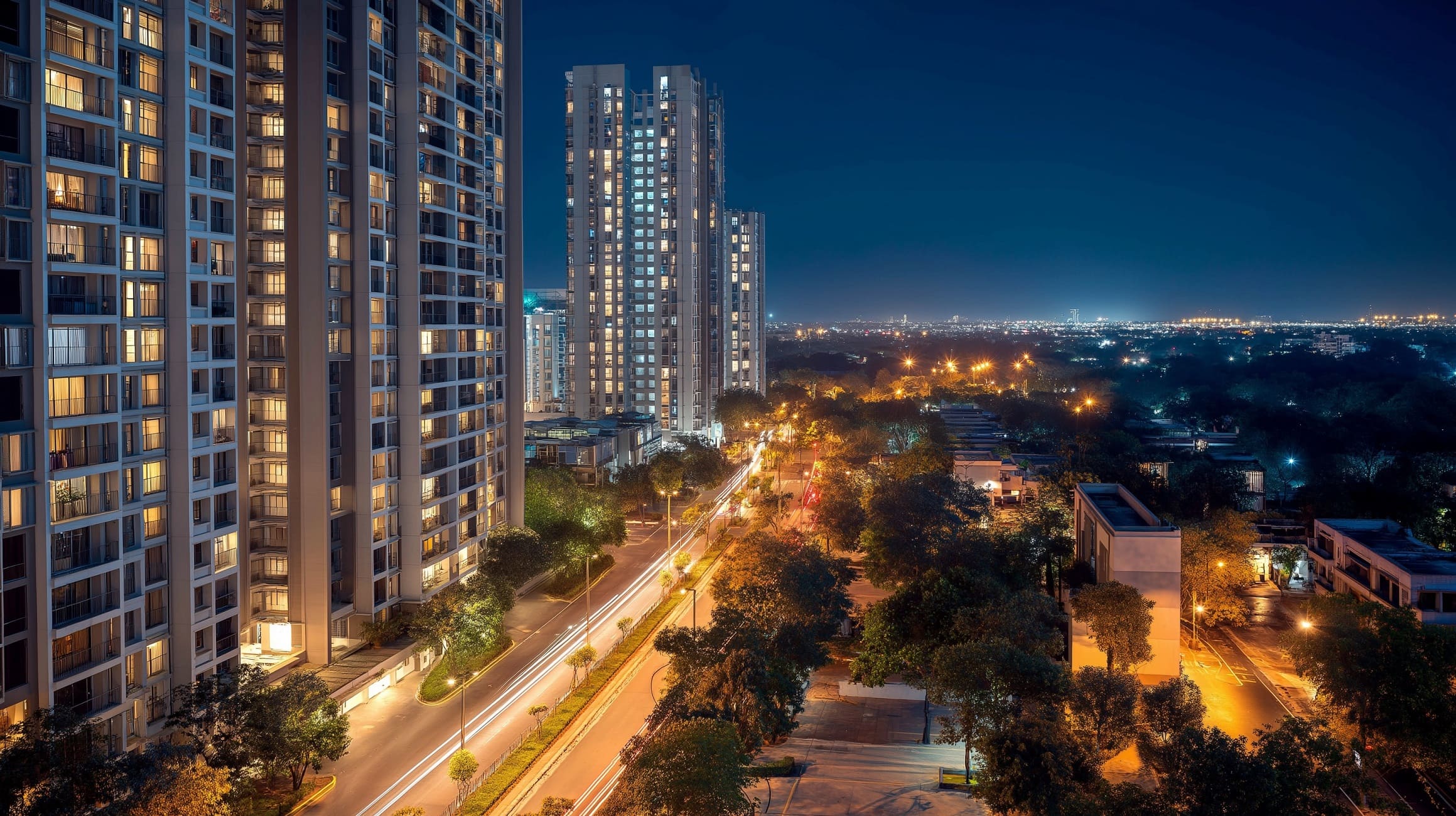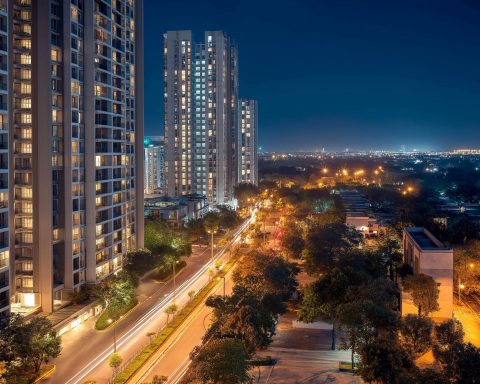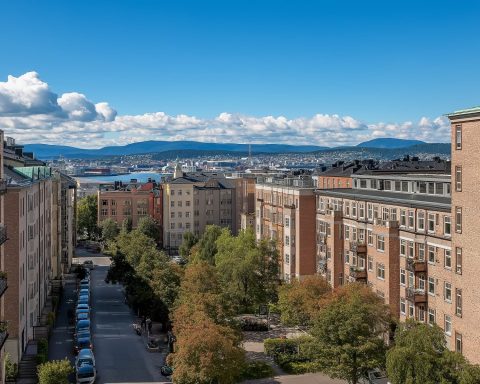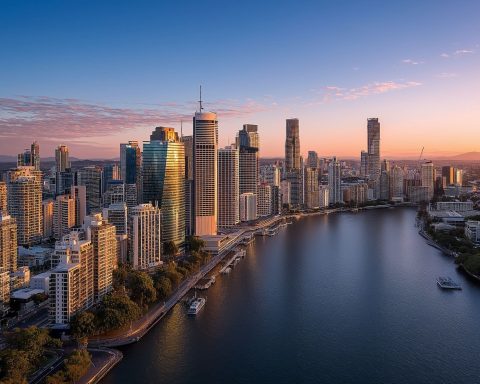As India’s tech capital, Bengaluru (Bangalore) is witnessing a real estate boom in 2025, with soaring property prices, new growth corridors, and robust demand across residential and commercial segments. This detailed report examines the city’s housing and office market trends in 2025 and what to expect in the coming years. From surging housing demand and office space absorption to emerging investment hotspots like Whitefield and North Bengaluru, we break down the key factors driving the market. Read on for a data-driven outlook on pricing, supply, infrastructure projects, economic drivers, forecasts, and the challenges that could shape Bengaluru’s real estate trajectory.
Residential Real Estate Trends in 2025
Bengaluru’s housing market in 2025 is vibrant and resilient. In the first quarter of 2025, the city sold 15,340 residential units, only a modest 10% drop from 16,995 units in Q1 2024 therealtytoday.com. Developers remained bullish – 20,484 new units were launched in Q1, a remarkable 62% jump year-on-year therealtytoday.com. This surge in supply shows confidence in future demand. Notably, roughly 30% of all home sales in Q1 came from projects launched in the same quarter, indicating strong buyer appetite for new developments even as they are being introduced therealtytoday.com. In short, sales volumes have dipped slightly from last year’s peak, but new supply is pouring in and being quickly absorbed – a sign of enduring demand.
Property prices are climbing fast. Average residential prices in Bengaluru rose about 13% year-on-year in early 2025 therealtytoday.com. This steep appreciation is driven by the twin effects of premium new project launches and rapid uptake of quality homes. Established tech hubs have seen the biggest gains – Whitefield led the city with a 17% annual price jump, followed by Hosur Road at 14% therealtytoday.com. These areas benefit from improved connectivity (such as newly extended metro lines) and strong interest from IT professionals and investors. Market-wide, a recent survey projects Indian urban house prices to rise ~6.5% in 2025 and 7.5% in 2026, underpinned by high-end property demand globalpropertyguide.com. In Bengaluru, prices are not expected to drop anytime soon; on the contrary, ongoing infrastructure upgrades and buyer demand are maintaining steady appreciation sobha.com.
Another striking trend is a shift toward premium housing. Mid- to high-end segments now dominate sales. In Q1 2025, homes priced above ₹1 crore (~$125K) accounted for about 61% of all units sold – a huge portion of the market therealtytoday.com. The luxury range is booming: units in the ₹3–5 crore bracket saw an astonishing 119% jump in sales year-on-year therealtytoday.com, reflecting growing appetite for upscale living. Upscale neighborhoods like Indiranagar, Koramangala, and Jayanagar are hotbeds of new luxury projects (penthouses, villas, high-end apartments) targeting affluent buyers and expatriates addressadvisors.com. Wealthier professionals are seeking larger homes with top-notch amenities, and developers are catering to this demand with bespoke luxury offerings. By contrast, sales in lower-priced segments have slowed, raising some affordability concerns – the market’s heavy reliance on the luxury segment is something to watch over the longer term globalpropertyguide.com.
Meanwhile, homebuyer preferences have evolved post-pandemic. There is rising demand for housing that offers more than just four walls: community-centric living and lifestyle features are in vogue. Gated communities and integrated townships with shared amenities – co-working spaces, gyms, parks, clubhouses – are increasingly popular, as they provide privacy along with a sense of community addressadvisors.com. Developers are also focusing on sustainability and smart technology. Eco-friendly, “green” homes with energy-efficient designs and water-saving features are no longer niche – buyers in 2025 are actively prioritizing sustainable homes addressadvisors.com. Likewise, Bengaluru’s tech-savvy populace is driving demand for smart homes equipped with IoT devices, automation, and advanced security systems addressadvisors.com. In summary, today’s buyers want modern, tech-enabled, green homes that offer a complete lifestyle experience, not just a dwelling. The range of housing types on offer reflects this diversity – from compact smart apartments in the city to spacious villas in the suburbs – and each segment is finding its own buyer base in Bengaluru’s cosmopolitan market.
Commercial Real Estate – Offices & Co-working Surge
Bengaluru continues to reign as India’s top commercial real estate market in 2025. The city has consistently led the country in office space absorption, and this trend is only strengthening addressadvisors.com. In 2024, Bengaluru saw a historic high of about 16 million sq. ft. of office leasing, the highest among Indian metros addressadvisors.com. Now in 2025, it’s on track to break records again – projections suggest annual absorption could cross 18 million sq. ft. this year addressadvisors.com. Recent quarterly data underscores this momentum: Q1 2025 net absorption hit 3.2 million sq. ft., the highest opening-quarter level since the pandemic realestateasia.com. By Q2 2025, Bengaluru led all cities with 4.8 million sq. ft. leased in the quarter (about 27% of India’s total office demand) rprealtyplus.com. Vacancy rates have fallen to ~11.4% as of Q1 2025, a 50 bps drop in one quarter, indicating that new supply is being swiftly absorbed realestateasia.com. In fact, office vacancies are at their lowest in 14 quarters, and rents in prime districts have pushed above ₹100 per sq. ft. per month lodhagroup.com – a testament to high demand for quality space.
This robust office demand is driven by both the tech sector and a diversifying occupier base. As the “Silicon Valley of India,” Bangalore’s large IT and ITeS firms traditionally anchor its office market, accounting for about 60% of leasing activity addressadvisors.com. That core remains strong in 2025 with continued expansion of IT services and Global Capability Centers (GCCs) of multinational companies fueling space take-up addressadvisors.com addressadvisors.com. However, other sectors are now expanding their footprint as well – notably manufacturing/engineering, BFSI (banking & finance), and startups. In Q1 2025, manufacturing and engineering companies actually led the way, contributing 32.5% of space leased – signaling a broadening beyond just IT realestateasia.com. Flexibility in work models is another theme: many firms are opting for flexible workspaces and managed offices. Co-working operators have become major players in Bangalore’s office scene, catering to both startups and large corporates’ hybrid needs. In 2024, flex space providers accounted for nearly 20% of all leasing in the city addressadvisors.com, and this share is climbing in 2025. Across India, co-working operators leased 6.5 million sq. ft. in H1 2025, a 48% year-on-year jump theflexinsights.com, and Bangalore is one of the largest contributors to this boom. The demand for flexible, plug-and-play offices reflects companies’ push to reduce capex and accommodate hybrid work arrangements. Managed offices and coworking centers in Bengaluru are thriving, effectively redefining the commercial real estate landscape with nearly one-fifth of new leasing being in flex spaces theflexinsights.com.
Another noteworthy trend is the steady rise of rentals and capital values in Bangalore’s office market. With vacancy tightening and demand strong, office rents are on an upswing. Prime Grade A office rentals grew ~3–5% in 2024 and are projected to rise another ~4–5% in 2025 addressadvisors.com. Landlords in hot micro-markets (like Outer Ring Road or Whitefield) are finding tenants willing to pay a premium for quality space, and average rents in top locations have surpassed the ₹100/sq. ft. mark sobha.com lodhagroup.com. The investor sentiment in commercial real estate is positive as well – Bengaluru’s strong leasing and rent uptick is attracting institutional investors looking for stable yields. Core office assets in the city are seeing growing interest, and capital values are inching up alongside rents realestateasia.com. Developers, for their part, are lining up new supply to meet the demand. Over 30 million sq. ft. of new office stock is scheduled for completion by 2025 in Bangalore addressadvisors.com, including large projects in North Bengaluru and along the Peripheral Ring Road. Impressively, much of this new supply is being absorbed as soon as it comes online, thanks to the city’s continued economic growth and occupier confidence. Bengaluru accounted for the largest share of new Grade-A office completions in H1 2025, alongside Pune and Hyderabad, together making up 70% of India’s office supply addition rprealtyplus.com. The fact that demand is keeping pace with hefty supply additions underscores the city’s resilience. Overall, Bangalore’s commercial realty in 2025 is characterized by low vacancies, rising rents, and high absorption – a landlord’s market in many ways, buoyed by the city’s status as the premier destination for corporate expansion in India.
Investment Potential and Emerging Micro-Markets
For real estate investors, Bangalore is an attractive bet with healthy ROI prospects. Industry experts suggest that the period 2025 to 2030 presents an excellent window for property investment in Bengaluru, as multiple infrastructure and economic factors align for growth. Investors can expect both capital appreciation and rental income to trend positively. Citywide, home prices are projected to continue rising in the mid-single digits annually in the near term globalpropertyguide.com. In fact, sustained buyer demand and limited prime supply mean property rates are unlikely to fall significantly in Bangalore – even in 2025’s high-interest environment, prices have held firm and mostly appreciated sobha.com. On the rental front, Bengaluru offers one of the strongest rental markets in India. The influx of professionals to this tech hub keeps rental yields healthy at around 3–4% in many locales, higher than in Mumbai or Delhi. Certain areas near employment centers yield particularly well. For example, the startup and IT boom ensures steady tenant demand in places like Koramangala and HSR Layout, where landlords have seen rents climb year after year. North Bangalore (near the airport and tech parks) is forecast to see residential rentals appreciate by 20–25% in 2025 alone, according to one outlook lodhagroup.com – pointing to significant returns for investors in those emerging neighborhoods.
A big draw for investors is Bengaluru’s array of emerging micro-markets that promise high growth. Unlike some cities where development is confined, Bangalore’s expansion is multi-directional, opening up new investment frontiers. North Bengaluru is a prime example: areas around Hebbal, Yelahanka, and Devanahalli (airport vicinity) are transforming into realty hotspots. Once considered peripheral, these locations now boast tech parks, improved highways, and upcoming metro/rail connectivity. Investors are bullish on North Bengaluru for its long-term appreciation potential – affordable land prices today could turn into gold as commercial activity and infrastructure multiply there addressadvisors.com sobha.com. Another magnet is the Sarjapur Road belt in the south-east. With its strategic location connecting the Outer Ring Road and Electronic City tech clusters, Sarjapur has become family-friendly and fast-appreciating, offering modern housing at relatively lower entry prices lodhagroup.com. Multiple IT campuses and the forthcoming metro line have put Sarjapur Road firmly on investors’ radar. Similarly, Whitefield, an established IT hub in the east, remains an investment favorite due to continuous commercial growth and the new Purple Line metro extension. Whitefield saw some of the highest price gains (17% YoY) in 2025 therealtytoday.com and still has ample scope for future appreciation given ongoing development. Other micro-markets like Kanakapura Road, Hennur, and Hoskote are also gaining attention as “next frontiers” thanks to new infrastructure reaching those areas addressadvisors.com.
Investor sentiment in Bangalore real estate is upbeat. A positive economic outlook and increasing transparency in the sector contribute to confidence. Regulatory reforms such as the Real Estate Regulatory Authority (RERA) have boosted trust by bringing accountability to developers, and digitization measures like e-Khata (online property records) are reducing fraud, making it safer to invest sobha.com sobha.com. The state government’s pro-business stance – for instance, offering incentives for IT and startup firms – indirectly fuels real estate too by driving job growth (and housing demand) in the city addressadvisors.com. NRI investors also view Bangalore favorably, given its global reputation and the weaker rupee in recent years which makes Indian property more affordable in dollar terms. On the commercial side, Bangalore is drawing increasing interest from institutional investors and REITs, thanks to high office absorption and attractive yields relative to other APAC cities. Recent reports show growing investor appetite for office assets across India, and Bangalore – being the largest office market – is a key focus rprealtyplus.com. Private equity investments in real estate have been flowing into Bangalore’s office developments and logistics parks, reflecting confidence in long-term prospects. In summary, Bengaluru offers a compelling investment story: strong economic drivers, improving infrastructure, and a range of upcoming locations where early investors could reap significant appreciation. By staying attuned to emerging micro-markets and choosing reputable developers, investors can capitalize on Bangalore’s growth while managing risks like project delays or regulatory changes sobha.com.
Key Areas and Localities Showing Growth
Certain localities in Bengaluru are emerging as standout growth centers in 2025, thanks to a mix of infrastructure upgrades, proximity to jobs, and available land for new projects. Below are some of the key areas to watch – from established tech hubs to fast-developing suburbs – and what’s driving their real estate momentum:
| Locality / Corridor | Growth Highlights (2025) |
|---|---|
| Whitefield (East) | One of Bangalore’s original IT hubs, now supercharged by the new metro line (Purple Line). Whitefield led the city with ~17% YoY rise in home prices therealtytoday.com and accounted for ~35% of Q1 2025 home sales therealtytoday.com – a testament to its enduring popularity. Excellent connectivity, large IT parks, and new malls/schools make Whitefield a top choice for professionals. |
| Sarjapur Road (South-East) | A rapidly developing tech corridor connecting Outer Ring Road and Electronic City. Sarjapur Road is family-friendly and fast-appreciating, with many new residential projects lodhagroup.com. The upcoming metro expansion and easy access to IT hubs have boosted its appeal. Investors are drawn by relatively affordable prices and the promise of high growth as infrastructure improves. |
| North Bengaluru (Hebbal & Yelahanka) | The Hebbal area and surrounding North Bangalore neighborhoods have become realty hotbeds due to their strategic location. Proximity to Kempegowda International Airport, the presence of Manyata Tech Park and other business parks, and planned projects like the metro to airport have spurred demand. In Q1 2025, the Bellary Road/Hebbal corridor alone saw ~33% of the city’s new residential launches therealtytoday.com as developers bank on future growth here. Premium housing and rental demand are rising, supported by improved connectivity (flyovers, expressways) and new social infrastructure. |
| Devanahalli & Airport Region | Once a far-flung town, Devanahalli (near the airport) is now a buzzing investment zone. With the massive airport expansion and upcoming Aerospace SEZ, this area is attracting commercial projects and residential townships. Planned infrastructure like the Peripheral Ring Road (PRR) and Satellite Town Ring Road (STRR) will further enhance connectivity sobha.com sobha.com. Devanahalli and its vicinity promise long-term appreciation, and many investors are land-banking here anticipating a future boom. |
| Electronic City (South) | Bangalore’s famed IT hub in the south continues to grow. Electronic City is poised for another leap with the under-construction metro Yellow Line set to link it to central areas lodhagroup.com lodhagroup.com. The area offers a good balance of affordability and connectivity (especially with the elevated expressway in place). E-City’s numerous tech companies ensure steady housing demand, and new high-rise apartment projects plus malls are adding to its appeal. Mid-segment homes here remain more affordable than those along the ORR, making it popular among young techies. |
| Outer Ring Road (ORR) | The ORR IT Corridor (Bellandur-Marathahalli stretch) is the epicenter of Bangalore’s tech industry, hosting countless MNC campuses. It remains a high-demand area for both residential and rental markets. ORR is known as a “high-rental” zone for professionals lodhagroup.com – rents are elevated due to the concentration of offices. The forthcoming Blue Line metro along ORR will further boost this belt sobha.com. While new residential supply within ORR is limited (due to saturation), nearby areas like Panathur, Sarjapur and Kadubeesanahalli are benefitting from spillover demand. |
Other notable areas include Koramangala, an upscale central district favored by startup founders (limited new supply but ever-increasing prices), and Hosur Road towards the south, which is seeing a spate of new projects thanks to improved highway connectivity to Electronic City lodhagroup.com lodhagroup.com. Kanakapura Road in the south and Hennur Road in the north-east are also up-and-coming residential stretches, fueled by metro rail extensions and new township projects addressadvisors.com. Broadly, Bangalore’s growth is polycentric – multiple suburban nodes like Whitefield, Yelahanka, and Sarjapur are booming simultaneously. These micro-markets are creating a “20-minute city” concept, where each hub offers workplaces, homes, and recreation, reducing the need to commute to the traditional city center. Investors and homebuyers would do well to keep an eye on these high-growth pockets, as they are set to drive the next wave of Bangalore’s real estate expansion.
Infrastructure Developments & Government Policies Impacting Real Estate
Ambitious infrastructure projects and supportive policies are significantly shaping Bengaluru’s real estate landscape in 2025. The city and state governments are investing heavily in connectivity and urban development, unlocking new areas for growth:
- Namma Metro Expansion: Bangalore’s metro rail network is undergoing a major expansion (Phases 2 and 2A), adding new lines and extensions that vastly improve connectivity. The Purple Line was recently extended to Whitefield, integrating this IT hub into the metro grid. Upcoming lines like the Yellow Line to Electronic City and the Blue Line along Outer Ring Road will connect key corridors by 2025–26 lodhagroup.com. Every new metro route has a direct impact on real estate – for instance, property values around the new Whitefield stations have already surged, and areas slated for future stations (such as along Bannerghatta Road and Airport Road) are seeing heightened developer interest. The metro expansion is effectively shrinking commute times and making peripheral localities far more accessible, thus spurring housing demand in those areas addressadvisors.com.
- Peripheral Ring Road (PRR): After years of planning, the Peripheral Ring Road – a large expressway looping around the outskirts of Bangalore – is moving closer to reality. Once built, the PRR will divert traffic from the congested city core and provide speedy orbital connectivity between highways lodhagroup.com lodhagroup.com. Importantly, it will open up new land parcels in outer Bangalore for development. Localities along the PRR alignment (e.g., Yelahanka, Hoskote, Sarjapur outskirts) are already touted as the city’s next growth corridors. Investors are banking on PRR to unlock tremendous land value in the medium term, similar to what Outer Ring Road did two decades ago.
- Satellite Town Ring Road (STRR): Complementing the PRR is the planned Satellite Town Ring Road – a 204 km expressway encircling Bangalore at an even greater radius, connecting satellite towns around the city. The STRR will integrate hubs like Doddaballapur, Nelamangala, and Hosur into the metro region lodhagroup.com. By improving regional connectivity, STRR is expected to spur development of logistics parks, industrial estates, and affordable housing in those satellite towns. It essentially extends Bangalore’s influence to a wider commuter belt, which could ease urban pressure and create new real estate markets along its route.
- Road & Rail Upgrades: Several other projects are improving intra-city and inter-city connectivity. The Bengaluru Suburban Railway project, for example, is under construction, aiming to link city center with suburbs via high-speed trains lodhagroup.com. This will be a game-changer for far-flung areas like Nelamangala, Devanahalli, and Anekal, making daily commute feasible and thus boosting housing demand there. Newly completed highways like the Bangalore–Mysore Expressway have already cut travel times to satellite cities, leading to real estate growth in western outskirts sobha.com. Similarly, the proposed Bangalore–Chennai Expressway (NE-7) will enhance connectivity to Chennai and open up development along its corridor lodhagroup.com. Within the city, projects like elevated signal-free corridors and flyovers are easing bottlenecks at critical junctures sobha.com. All these infrastructure initiatives – metro rail, ring roads, suburban trains, highways – are collectively reshaping Bangalore’s geography, often turning once-remote locales into prime real estate due to newfound connectivity.
In tandem with physical infrastructure, government policies and regulatory changes are influencing Bangalore’s real estate. A notable policy move is the increase in Floor Area Ratio (FAR) limits in certain zones – the Karnataka government recently raised permissible FAR by up to 60% in parts of Bengaluru sobha.com. This allows taller buildings and denser developments, maximizing land use in the urban core. While higher FAR can help add housing supply and commercial space, it also puts onus on infrastructure to support greater density. The city is watching how this plays out, as vertical growth must be matched by adequate roads, water, and utilities to avoid strain sobha.com. Another important reform is the digitization of land records through mandatory e-Khata for property registration. From 2024, all new property registrations within BBMP limits require an e-Khata (online record), which improves transparency and helps eliminate fraudulent land dealings. Additionally, stricter building plan approvals (enforcing clear titles and adherence to master plans) have been put in place sobha.com. These regulatory steps are instilling greater confidence among homebuyers, who can be more assured of legal clarity and compliance in new projects.
The government also continues to promote affordable housing. Programs like the Pradhan Mantri Awas Yojana (PMAY) offer subsidies to first-time homebuyers, and reduced GST rates for affordable housing are in effect addressadvisors.com. Bengaluru has seen a number of budget housing projects launch under these schemes, particularly on the outskirts. While the mid- and high-end segments dominate the market by value, such initiatives aim to bridge the affordability gap for lower income groups. RERA Karnataka has been active as well, ensuring developers deliver on promises and maintain escrow accounts for project funds – this has improved overall buyer sentiment and accountability in the sector addressadvisors.com. On the commercial front, the state’s industry-friendly policies (like offering tax breaks for IT parks or easing norms for setting up offices) have kept the business climate attractive, indirectly boosting real estate. In summary, infrastructure and policy developments are largely positive catalysts for Bangalore’s real estate: better connectivity is expanding the market’s horizons, and regulatory reforms are fostering a healthier, more transparent environment for growth.
Economic Factors Driving the Market
Bangalore’s real estate fortunes are tightly interwoven with its economic prowess – and the city’s economy is firing on all cylinders in 2025. The primary engine is the technology sector, which continues to thrive and expand. As India’s IT capital, Bangalore is home to countless software firms, IT services giants, R&D centers, and a vibrant startup ecosystem. The city’s tech industry employs a huge workforce (well over a million professionals) and keeps adding jobs, which directly fuels housing demand and office space uptake. Even amid global macro uncertainties, Bangalore’s tech scene shows resilience: companies are still hiring, and many global firms are choosing Bangalore to set up their engineering hubs or Global Capability Centers. The presence of over 50 startup unicorns – the highest for any Indian city threads.com – underscores Bangalore’s status as the nation’s innovation hub. In the Global Startup Ecosystem Index 2025, Bengaluru jumped into the top 20 worldwide, reflecting strong growth in its startup environment m.economictimes.com. This translates to continuous inflow of talent, entrepreneurs, and investors into the city, boosting demand for both upscale and mid-range housing. Fintech, e-commerce, biotech, and AI startups have joined IT services in driving office leasing as well, contributing to the diverse demand for commercial real estate.
Moreover, Bangalore’s economy is diversifying beyond just IT/ITES. The manufacturing, aerospace and R&D sectors are gaining traction in areas like Peenya, Doddaballapur and around the airport. For instance, the emergence of aerospace parks near Devanahalli and electronics manufacturing clusters has started creating new employment nodes. The city’s industrial growth is one reason manufacturing firms grabbed a notable share (over 30%) of office leasing in early 2025 realestateasia.com – many are setting up engineering design centers or HQs in Bangalore. The robust Global Capability Center (GCC) trend is another economic driver: multinational corporations across banking, retail, and tech are establishing large captive centers in Bangalore to leverage the talent pool. By 2025, GCCs are expected to occupy tens of millions of sq. ft. of office space nationally, with Bangalore leading this wave brigadegroup.com. Indeed, the confidence of global companies in Bangalore is evident – their expansion through GCCs is playing a crucial role in shoring up leasing demand theflexinsights.com and bringing highly skilled jobs, which in turn spur high-end housing demand.
The employment growth in Bangalore has a virtuous effect on real estate. The city draws professionals from all over India with its high-paying jobs, resulting in steady population growth (Bengaluru’s urban agglomeration is now ~13 million people and rising). This young, upwardly-mobile population underpins housing absorption year after year. Even as interest rates fluctuated and inflation loomed, mid-and high-income households in Bangalore saw minimal income disruption and sustained wealth creation globalpropertyguide.com in recent times, enabling them to invest in property. The startup boom has also minted many new millionaires, feeding into the luxury home market. At the same time, student and migrant populations (for instance, those coming for the city’s numerous tech parks or universities) keep the rental market buzzing. Bangalore’s cosmopolitan culture and relatively pleasant climate make it a preferred destination for relocation, which supports long-term real estate stability.
Another factor is the strong entrepreneurial and innovation culture of the city. The concentration of research institutions, global companies, and startup incubators creates a dynamic economy that is less dependent on any single company’s fortunes. This has given investors confidence that Bengaluru’s economic trajectory will continue upward, barring any major external shock. It’s noteworthy that despite global headwinds in recent years (like pandemic disruptions or overseas recession fears), Bangalore’s economy remained resilient, and its real estate quickly rebounded addressadvisors.com. There is a growing trend of economic diversification: while tech remains dominant, sectors like fintech, edtech, biotech, aerospace, and clean energy are expanding their presence in the city realestateasia.com. Each of these brings new demand for offices and often foreign investment into the region.
Finally, the city benefits from being the capital of Karnataka, a state with relatively stable governance and proactive economic policies. State initiatives to improve ease of doing business, such as quicker industrial approvals or special economic zones, have kept investor sentiment positive. The startup policy, IT policy, and recent push for R&D and semiconductor industries in Karnataka all bode well for Bangalore’s future growth. In summary, Bengaluru’s real estate is underpinned by a strong economic foundation: a booming tech and startup ecosystem, continuous job creation (making it one of India’s fastest-growing job markets), rising incomes for a large section of residents, and a diversification into new industries. This economic vitality is the key reason why demand for real estate – both residential and commercial – remains robust, and why developers and investors are optimistic about the city’s outlook.
Demand-Supply Forecast and Outlook
The outlook for Bengaluru’s real estate in the coming years remains strongly positive, with demand expected to keep pace with (or exceed) new supply across segments. On the residential front, sales volumes in 2025 are projected to recover further after a record year in 2024. Last year saw ~350,000 homes sold across India’s top cities – a 12-year high globalpropertyguide.com – and Bangalore was a major contributor to this boom. While 2025 started with a slight dip in Q1 sales, that is viewed as a temporary adjustment after a very high base. If broader economic conditions remain stable (inflation and interest rates easing somewhat), buyer sentiment in Bangalore should stay upbeat, helping the market regain sales momentum in upcoming quarters therealtytoday.com. There is significant pent-up demand, especially in the mid-income and upper-middle segments, as many millennials and first-time buyers are entering the market. Supply is also abundant – developers launched over 50,000 units in Bangalore in 2024, and are on track to exceed that in 2025, indicating confidence. This healthy supply pipeline gives buyers plenty of choices and will help moderate extreme price spikes. However, given land scarcity in core areas and rising input costs, prices are likely to continue their gradual rise. Industry surveys foresee around 6–7% annual home price growth in Indian metros in the next couple of years globalpropertyguide.com, and Bangalore could even outperform that average due to its high demand for premium homes. In short, the 5-year outlook (2025–2030) for Bangalore’s residential market is one of steady growth – industry veterans even call this period a “golden window” for investment, with property values expected to appreciate strongly amid infrastructural leaps and economic expansion.
In commercial real estate, Bangalore is poised to maintain its top position and see record absorption through 2025 and beyond. Pan-India office leasing in H1 2025 reached 33.7 million sq. ft. (13% YoY growth) rprealtyplus.com, and Colliers expects the full year could hit 65–70 million sq. ft. – a level approaching the pre-pandemic peak rprealtyplus.com. Bangalore will account for a substantial share of this demand. With its quarterly leasing now averaging ~4–5 million sq. ft., the city could comfortably surpass 15–18 million sq. ft. of gross absorption in 2025 addressadvisors.com, assuming continued expansions by tech and GCC tenants. The office supply pipeline is also robust: about 2–3 million sq. ft. of new Grade-A space is slated for completion each quarter in Bangalore for the next couple of years rprealtyplus.com. Vacancy rates may rise slightly in the short term as this new supply enters, but strong pre-leasing by large occupiers means Bangalore’s vacancy is likely to remain in the low teens (10–13%), which is healthy. Rent growth is expected to persist in prime locations, albeit at a moderate single-digit pace annually, given high demand for quality offices. One emerging trend in forecasts is the rise of satellite office hubs around Bangalore – e.g., tech firms taking up space in secondary business districts or nearby cities (Mysore, Mangalore) for diversification. However, Bangalore’s depth of talent ensures it will stay the primary magnet for companies. On the retail and hospitality side (ancillary commercial sectors), the outlook is also upbeat: new malls are coming up in suburbs like Sarjapur Road and Yelahanka, and hotel occupancy has rebounded, prompting plans for more business hotels and co-living spaces. All these point to a broad-based real estate growth trajectory.
Long-term, Bengaluru’s growth outlook is bolstered by fundamentals: population inflows, urbanization, and its role as a tech-economic powerhouse. The completion of major projects (metro Phase 3, ring roads, suburban rail) by the late 2020s will likely unlock the next cycle of real estate development, pushing city limits further. By 2030, Bangalore’s landscape will have new nodes and far better connectivity, possibly even a second airport on the horizon – factors that could drive another surge in real estate activity. That said, the market will also go through periodic cycles. Industry experts caution that while the current narrative is very rosy, one must be mindful of macroeconomic swings. A global recession or a significant tech industry slowdown could cool demand temporarily. Additionally, if interest rates were to rise sharply again, affordability could be hit, slowing sales. However, at present, there is optimism that any such dips would be short-lived corrections rather than prolonged downturns. Bangalore’s real estate has historically shown the ability to bounce back from corrections faster than other cities, owing to its resilient demand base. The consensus among most analysts and developers is that Bengaluru will enjoy sustained growth in both residential and commercial real estate over the next 5–10 years, making it one of the most promising property markets in India.
Challenges and Risks to Watch
While the outlook is positive, Bengaluru’s real estate market is not without challenges and risks. It’s important for stakeholders to be aware of these factors:
- Infrastructure Strain & Traffic Congestion: Ironically, even as new infrastructure comes up, Bangalore continues to grapple with severe traffic and transport strain. The pace of real estate development often outstrips road capacity. Many areas – Sarjapur Road, Whitefield, ORR – face daily traffic snarls, which can diminish the appeal of even the nicest properties addressadvisors.com. Until projects like the PRR and metro are fully operational, congestion will remain a quality-of-life issue. Prolonged traffic woes could start to dampen buyer interest in otherwise growing localities if commuting becomes too arduous.
- Environmental and Resource Concerns: The city’s rapid expansion has raised environmental red flags. Unplanned growth has led to loss of green cover and put pressure on lakes and parks. Water scarcity is a looming threat – Bangalore’s water infrastructure is already stretched, and outer areas often face water shortages. Over-extraction of groundwater in new layouts is not sustainable sobha.com. If water or power infrastructure doesn’t keep up with new housing stock, it could restrain growth. There are also concerns about proper sewage, waste management, and air quality as the city densifies. Sustainable development practices need to accelerate; otherwise the environmental toll could invite regulatory crackdowns or make certain areas less livable.
- Affordability and Inequity: While the mid-to-premium segments are flourishing, affordable housing supply lags far behind demand. The rising property prices have put formal housing out of reach for many lower-income and even some middle-income households. This affordability gap persists despite government schemes addressadvisors.com. In effect, Bangalore risks becoming a city where only the well-off can buy homes, while others are pushed to distant suburbs or informal housing. A market overly skewed to luxury is also vulnerable – if the luxury segment cools (due to, say, a drop in HNI investments), overall market growth could falter globalpropertyguide.com. Maintaining a balanced development catering to all income levels is a challenge that Bangalore’s planners and developers must address to ensure inclusive growth.
- Project Delays and Compliance Risks: The real estate sector nationally has been plagued by project delays in the past, and Bangalore is no exception. Buyers and investors face risk if developers fail to deliver projects on time or as promised. Construction delays can be caused by funding issues, regulatory hurdles, or planning lapses. Although RERA has improved accountability, smaller developers missing deadlines is still a concern. Additionally, with new regulations (like mandatory planning authority approval before registration, stricter Khata rules, etc.), some projects might get stuck in approval stages sobha.com. Developers that do not comply with the tighter norms could face legal issues, impacting project timelines and buyers’ interests. Reputed builders are generally navigating these well, but consumers must perform due diligence.
- Economic Dependence on Tech Sector: Bangalore’s fortunes are closely tied to the tech and IT sector. This is a double-edged sword; a downturn in global tech (due to factors like U.S. recession, drop in IT spending, or visa policy changes) could directly hit local real estate demand. We have seen in the past that global economic slowdowns temper leasing and home-buying in Bangalore. While the city has diversified to an extent, a major risk remains external economic shocks – for instance, major currency fluctuations or geopolitical events that affect outsourcing demand. Any slackening in the startup funding environment could also slow the absorption of office spaces by tech startups and reduce the number of new well-paid jobs, thereby softening housing demand. Essentially, Bangalore’s real estate health is intertwined with its economic health; prudent investors should monitor the tech industry outlook as a barometer.
- Regulatory and Policy Changes: Future changes in government policy, both at central and state level, could impact the market. For example, any significant hike in interest rates or tighter credit availability can reduce housing affordability and buyer capacity. Changes in taxation (stamp duty, GST rates) or in schemes like PMAY could alter the cost dynamics for buyers. Conversely, overly lenient policies (like excessive FAR without infrastructure) could lead to short-term booms followed by long-term issues. The market also keeps an eye on political stability and governance – a stable policy regime generally favors real estate growth, whereas frequent policy reversals or uncertainty (for instance, around land acquisition for infrastructure) can be a risk factor.
In conclusion, Bengaluru in 2025 presents a picture of robust real estate growth with a promising outlook, yet it must navigate these challenges carefully. Stakeholders – from developers to policymakers to homebuyers – will need to emphasize sustainable and planned development, ensure infrastructure keeps pace, and be mindful of economic cycles. The city’s inherent strengths give it an edge, but addressing its weaknesses will be key to translating the current boom into long-term, equitable growth. By watching these risk factors and proactively managing them, Bangalore can solidify its position as one of India’s most dynamic and rewarding real estate markets for years to come.












